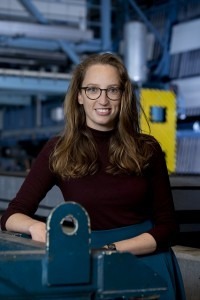‘ A high density use of the sea is challenging from a safety, cultural, economic and technical perspective’
 ‘Life at Sea’ is certainly the broadest market which MARIN serves. As the name implies, it entails everything related to life at sea. “Think about food production such as fisheries and aquaculture, ocean research, nature, but also living, tourism and working at sea,” Floor Spaargaren explains, as Project Manager Offshore and coordinator for the Life at Sea market.
‘Life at Sea’ is certainly the broadest market which MARIN serves. As the name implies, it entails everything related to life at sea. “Think about food production such as fisheries and aquaculture, ocean research, nature, but also living, tourism and working at sea,” Floor Spaargaren explains, as Project Manager Offshore and coordinator for the Life at Sea market.
The main stakeholders are also wide ranging, including NGOs, fishery and aquaculture entrepreneurs, offshore contractors and governmental institutions. In all aspects of the life at sea market the focus on sustainability and ecology is very important, she stresses. “Users of the sea are getting more and more aware of the potential ecological impact of their assets and/or the need to reduce the damage done to ecology.”
Marine spatial planning
For food production offshore, the biggest development will be scaling up from the current pilot projects to industrial scale in the years to come. This upscaling has its technological challenges, but for the North Sea there is another major challenge regarding marine spatial planning as well. “Therefore the multi-use of space, specifically co-locating with wind farms is an important development.”
Floor comments: “Typically the profit margins are small in this market, in order to develop economically viable concepts whereby the risks and costs have to be low enough. This requires technical optimisation and therefore proper engineering tools. Marine spatial planning will be especially challenging in the North Sea where many players are developing in the same areas. This high-density use of the sea is a safety challenge, but also a cultural challenge. For a true sustainable future, cooperation is key between a variety of sectors, ranging from biologists to offshore engineers and fishermen to wind energy developers.”

